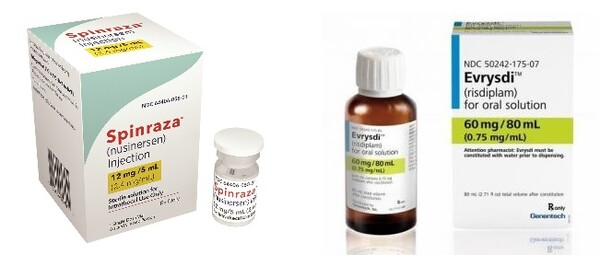Starting in October, the reimbursement standards for the spinal muscular atrophy (SMA) drugs Spinraza (nusinersen) and Evrysdi (risdiplam) will be expanded and newly established.
The Ministry of Health and Welfare (MOHW) issued an administrative notice on the “Partial amendment to the details (pharmaceuticals) on the application standards and methods of medical benefits” last Friday and will collect opinions until Monday.
The targets of both drugs are the same.

They are patients with 5q SMA with a confirmed genetic diagnosis of a deletion or mutation in the 5q SMN-1 gene, who have three or fewer copies of the SMN2 gene even before the onset of symptoms and are less than six months old at the time of treatment initiation, or those with type 1 to 3 who show SMA-related clinical symptoms and signs and are not on a permanent ventilator.
An assessment tool that considers the patient's age and condition is presented for the assessment of motor function.
If patients’ age at the time of administration is 24 months or younger, they use CHOP-INTEND as the primary assessment tool (required) and HINE-2 as a secondary assessment tool (if necessary). If they are 24 months and older, they use the HFMSE as the primary measure and the RULM, CHOP-INTEND (non-sitter), and CHOP-ATEND (non-sitter) as secondary measures.
The definition of “improvement” in motor function from the cutoff criteria was also defined for each motor function assessment tool.
For HINE-2, clinically meaningful improvement was defined as an increase of two points or more in the “kick score or one point or more in any other category (excluding voluntary grasp).” For CHOP-INTEND (CHOP-ATEND), they defined clinically meaningful improvement as an increase of four or more points in the total score, HFMSE as an increase of three or more points in the total score, and RULM as an increase of two or more points in the total score.
In addition, the committee will consider potential benefits through adolescence (up to age 18), when neurodevelopment continues, even if two consecutive demonstrations of "improvement" or "maintenance of improvement" in motor function were not possible.
Switching or combining medications for SMA is not covered, but a one-time switch is allowed only if improvement is confirmed while taking Spinraza. The committee also determines that there are clinical reasons (such as scoliosis) that do not meet the discontinuation criteria but require a switch to Evrysdi.
Specifically, Evrysdi has added dosing, administration, and medication management criteria for daily oral administration at home, unlike Spinraza, administered by intrathecal injection in the clinic.
Prescriptions for Evruysdi are for inpatient use only, with a maximum of two vials per prescription for discharge and outpatient use for long-term use. Patients or guardians prescribed Evrysdi must fill out a “patient medication diary” to confirm the duration and management of the drug, which the nursing institution must manage.
Meanwhile, Spinraza and Evrysdi have been added to the “Standards for reimbursement management of highly expensive drugs' under the latest revision.
If Spinraza or Evrysdi is administered to a patient who is “over 18 years old at the time of the first administration” and has an “HFMSE score of less than five,” the patient's medication and evaluation information for a period of “one year” shall be specified and submitted on the medical expenses statement as stipulated in the “Method of claiming medical expenses, examination claim form, statement form, and writing tips.”
The head of the Health Insurance Review and Assessment Service shall determine details of methods and procedures for performance evaluation and other matters.
Related articles
- Negotiations to expand coverage of Spinraza and Evrysdi end dramatically
- Patients get antsy amid protracted price bargaining for Spinraza, Evrysdi
- Spinraza’s reimbursement depends on proving continuous motor function
- Oral SMA drug Evrysdi passes reimbursement review
- Roche’s SMA oral drug wins health insurance coverage in Korea
- Spinraza reimbursement denied for some SMA patients after failure to prove motor function maintenance

